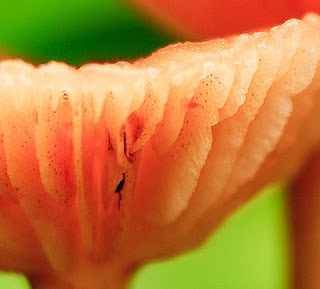 One thing I absolutely love about photography is that it's not just about the hero moments. Yes those pictures of amazing sights have the ability to captivate us, but I find that just as powerful are those quiet little moments that maybe don't amaze us so much, but still hold lots of interest.
One thing I absolutely love about photography is that it's not just about the hero moments. Yes those pictures of amazing sights have the ability to captivate us, but I find that just as powerful are those quiet little moments that maybe don't amaze us so much, but still hold lots of interest.Those little vignettes of people's lives that show what to them is an ordinary situation, but to us seems so different and unique.
Take this shot here. I was in the middle of absolutely nowhere in Mali, West Africa. I mean there was nothing that I could see for miles in any direction. And we were stopped by the side of a road having a bit of a break, something to eat and drink.
Then all of a sudden in the distance we could see this little black dot approaching us. Too big and slow for an animal, and coming in too straight a line. Adhering to my rule to always have my camera nearby, I grabbed it and a telephoto lens out of the bag to have a look.
It was a man dressed up in a shirt and pants riding his bicycle along this little dirt track in the middle of nowhere. Nothing unusual for him I'm sure, but for me it was out of this world. I knew that I had to take a photo, even if it was just a reminder of a brief, chance encounter.
With the telephoto lens there was a lot of road between me and him and I could have chosen anywhere to take the image. So I scanned in front of the man just to look for a nice background for him to ride into. And then I noticed the small road sign in the top right hand corner - just a nice little detail to break up the picture and give a bit more interest.
So I pointed the camera there and just waited for a few minutes until he road into view. I just took the one shot. As he road past we waved, exchanged bonjours and on he went. Where he was going I have no idea. I'm sure he was just as amused by us as we were of him. Just a quiet little moment. No spectacular acts of heroism. Moments of passion. Moments of anything really. But for me a nice little image that captures a man going about his daily life in what, to me, seemed an incredible place.




